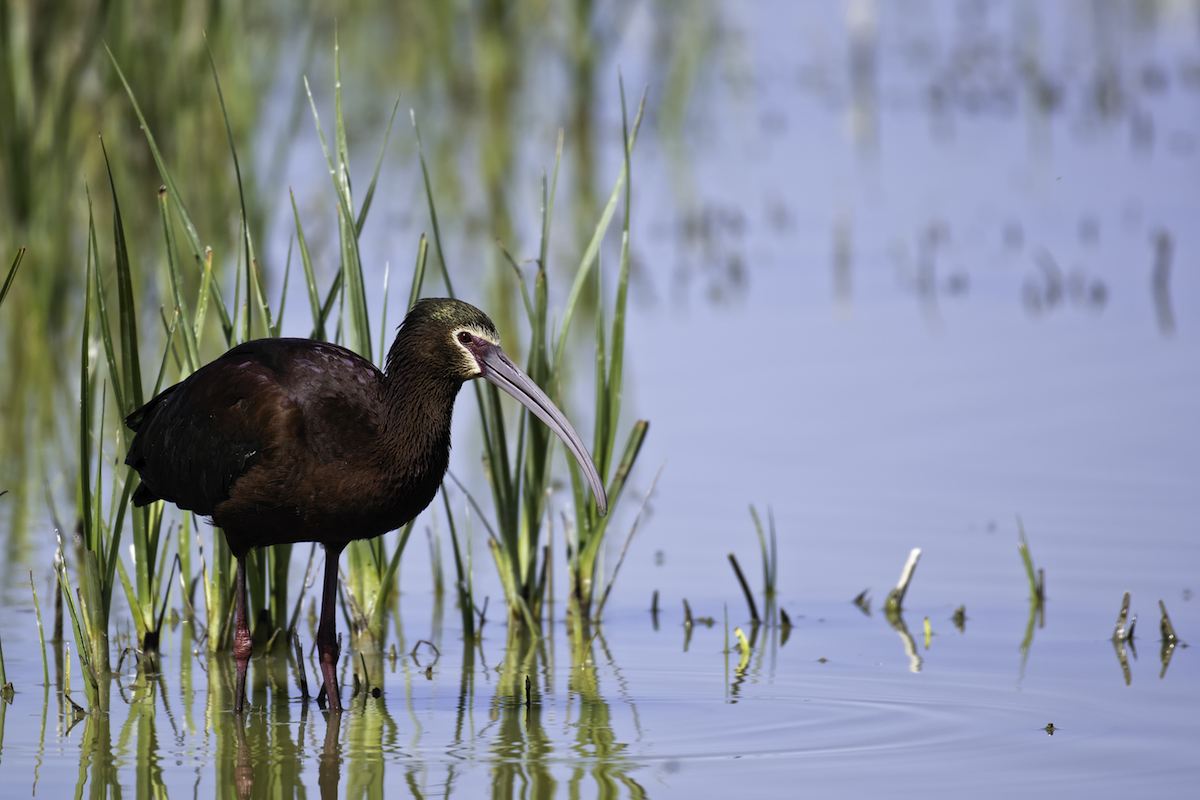In the middle of the Nevada desert lies a vast wetland covering almost 80,000 acres and designed as an important stop for migratory birds.
The Stillwater National Wildlife Refuge northeast of Fallon has been an important stopping point for birds since the National Wildlife Refuge system began in 1934 as part of the Migratory Bird Hunting and Conservation Stamp Act (known as the Duck Stamp Act).
Carl Lunderstadt provided an overview of the refuge and its importance not only in Churchill but the also internationally. Lunderstadt, project leader of the U.S. Fish and Wildlife Service’s Stillwater National Wildlife Refuge, spoke last Tuesday at the Churchill County Museum’s series on water. “Water for Stillwater: An Oasis in the Desert” examined in part how the Newlands Project has affected the refuge.
The Stillwater NWR Complex currently includes Stillwater NWR, Stillwater Wildlife Management Area (WMA), Fallon NWR and Anaho Island NWR, All are located in west-central Nevada. Lunderstadt said thousands of additional acres are located outside these areas.
Lunderstadt, a native of southwestern Oregon, said the U.S. government sought to establish a refuge in the Stillwater marshes in 1940s. He referred to the area as the “Delta on the Carson Sink.”
“There were decisions made on what lands could be preserved,” Lunderstadt said of the initial process.
In 1949, the government originally established the area as a National Wildlife Refuge after receiving input from the Nevada Fish and Game Dept. (now the Nevada Department of Wildlife), the State of Nevada and the Truckee-Carson Irrigation District. Lunderstadt said a signed 50-year agreement then led to the Stillwater Management Area. He said the area allowed trapping, grazing and hunting, and the south end of the refuge was closed.
“There was one piece where there was no hunting,” Lunderstadt pointed out.
Initially, water at the refuge was used year-long to generate power.
“In the winter, that water couldn’t be used for agriculture,” he said. “All ponds and lakes must be full of water year round.”
Additionally, Lunderstadt said the refuge was once known for world-class bass fishing.
The infrastructure of the refuge also began to increase. The refuge now has 35 miles of canal, 18 miles of levees, 128 miles of roads, 71 water structures, 27 parking lots and 15 boat launches. Lunderstadt said much of the infrastructure is either for public use or to manage water in the refuge.
 Larry Neel photo courtesy of USFWS
Larry Neel photo courtesy of USFWS
A white-face Ibis is one of the many birds that call the Stillwater National Wildlife Refuge home.
A significant change occurred with the passage of the Clean Water and Endangered Species acts that ushered in the 1980s and 90s as did other changes implemented by the federal government. One of the measures was to maximize the water coming from the Carson River and minimize the usage of water from the Truckee Canal. Lunderstadt said the bill shepherded by former Nevada Sen. Harry Reid changed the refuge’s mission.
“The new purpose is to maintain national biodiversity, conserve fish and wildlife in their habitat, fulfill international treaties and obligations and migratory bird treaties and provide opportunities for research, education and recreation,” Lunderstadt said.
Additionally, the Bureau of Reclamation assumed the management of grazing rather than the refuge.
“Every refuge has something unique,” Lunderstadt said.
The project leader said other plans for the Wildlife Management Area (WMA) should help.
“It really helps us guide and manage the refuge over the long term,” Lunderstadt said.
Lunderstadt said the Lahontan Reservoir has been taking the highs and lows of a drought. Despite the bleak years of drought, he said the refuge’s water supply has increased with effluent permits from both Churchill County and Naval Air Station Fallon. Lunderstadt looks at the partnership as being good neighbors. Also, the county and NAS Fallon began a conservation easement program 17 years ago to save water in the valley.
The refuge is the county’s largest water-right holder since it receives most of its water from the canal system to preserve the refuge. Lunderstadt said the refuge exits as a habitat and stopping place for food and rest for shore birds on the migratory routes. He said a certain percentage of birds use the refuge as a stop from the Arctic to South America and vice-versa.
“It takes a lot of water, food and habitat for (their) protection from predators,” he said.
Additionally, he said the refuge reduces decomposing matter in the water to prevent botulism outbreaks that could kill the waterfowl.
Although the desert can encounter dry and wet cycles, Lunderstadt explained this is a natural cycle for the wetlands to maintain their health. One of the deepest snowpack in recent years occurred almost five years ago when records were snapped, but this year, Lunderstadt said the forecast seemed to predict drier and drier weather. The “bomb cycle” of storms and heavy rains moving through Northern California and western Nevada for the past four days, though, will provide some relief to the wetlands.
While Stillwater is a good habitat for more than 200 species of birds and other animals, he said the refuge also provides activities for people.
“We do allow hunting, wildlife conservation, wildlife photography, hiking camping, boating and horseback riding,” he said.
Lunderstadt said visitors can also view the marsh’s uniqueness from an observation platform. He said the refuge is open year-round.
 Larry Neel photo courtesy of USFWS
Larry Neel photo courtesy of USFWS